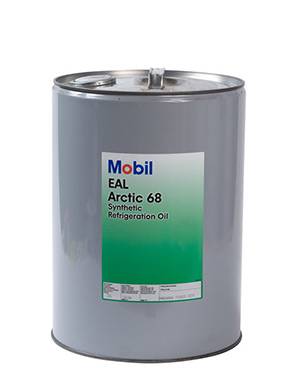ធ្នូ . 24, 2024 08:06 Back to list
Understanding the Types and Uses of PVC Pipe Fittings for Home Projects
Understanding PVC Pipe Fittings A Comprehensive Guide
PVC (Polyvinyl Chloride) pipe fittings are essential components used in a wide range of plumbing and construction projects. Known for their durability, affordability, and ease of installation, PVC fittings have become a popular choice among both professionals and DIY enthusiasts. This article delves into the types, benefits, applications, and installation of PVC pipe fittings, providing a thorough understanding of this crucial plumbing material.
Types of PVC Pipe Fittings
PVC pipe fittings come in various shapes and sizes, catering to different needs in plumbing systems. Some common types of PVC fittings include
1. Elbows Used to change the direction of the pipe, elbows are available in 45-degree and 90-degree angles, allowing for versatile routing of pipelines.
2. Tees Shaped like the letter 'T', these fittings allow for the branching of pipes to create a secondary line.
3. Couplings Used to connect two pieces of the same diameter pipe, couplings facilitate a seamless and secure connection.
4. Adapters These fittings allow for the transition between different types of materials, such as from PVC to another type of pipe.
5. Caps and Plugs These fittings are used to close off the end of a pipe. Caps are used for open-ended pipes, while plugs are inserted into the fitting sockets.
6. Reducers Used to connect pipes of different diameters, reducers help in managing varying flow rates in a plumbing system.
Benefits of PVC Pipe Fittings
PVC pipe fittings offer numerous benefits, making them a preferred choice in various applications
- Durability PVC is resistant to corrosion, chemicals, and environmental factors, ensuring a long lifespan for plumbing systems.
- Lightweight PVC fittings are significantly lighter than metal options, making them easier to handle and install.
- Cost-Effective PVC materials are less expensive than many alternatives, both in terms of initial costs and maintenance.
- Low Friction The smooth interior surface of PVC fittings minimizes flow resistance, allowing for efficient fluid transportation.
- Easy Installation PVC pipe fittings can be easily cut, shaped, and joined using solvent cement, reducing labor time and costs during installation
.pvc pipe fittings

- Eco-Friendly PVC is recyclable, making it a more sustainable option compared to some other materials.
Applications of PVC Pipe Fittings
The versatility of PVC pipe fittings means they are used in various applications, including
- Residential Plumbing Commonly used for water supply and drainage systems, PVC fittings ensure reliable performance for household plumbing needs.
- Irrigation Systems PVC fittings are widely used in agricultural applications, providing effective solutions for irrigation and water distribution.
- HVAC Systems In heating, ventilation, and air conditioning systems, PVC fittings help manage airflow and exhaust.
- Industrial Applications Many industries utilize PVC fittings for chemical processing, wastewater management, and in any scenario where durability and resistance to corrosion are essential.
Installation of PVC Pipe Fittings
Installing PVC pipe fittings is a relatively straightforward process, but it requires some preparation
1. Gather Tools and Materials Essential tools include a measuring tape, pipe cutter, deburring tool, and solvent cement. Ensure you have the right size fittings for your pipes.
2. Cut the Pipe Measure and cut the PVC pipe to the desired length using a pipe cutter, ensuring the cut is straight and clean.
3. Debur the Edges Use a deburring tool to smooth out the edges of the cut pipe to prevent injury and ensure a better seal.
4. Apply Solvent Cement Apply solvent cement to both the fitting and the pipe end. Be sure to follow the manufacturer's instructions regarding drying times.
5. Join the Pieces Push the pipe into the fitting and twist slightly to spread the cement evenly. Hold it in place for a few seconds to ensure a proper bond.
6. Allow to Cure Give the assembly sufficient time to cure before applying any pressure or flow to the system.
Conclusion
PVC pipe fittings are a vital aspect of modern plumbing and construction, offering a range of benefits that cater to various applications. Their durability, cost-effectiveness, and ease of installation make them an ideal choice for both residential and commercial projects. By understanding the types and installation processes of PVC fittings, you can effectively tackle any plumbing challenge with confidence and efficiency. Whether you are a professional plumber or a homeowner, incorporating PVC pipe fittings into your projects can lead to successful and long-lasting results.
-
Durable PP Rigid Sheet: Lightweight, Chemical Resistant Solutions
NewsAug.21,2025
-
PVC Grey Sheet for Extraction: Chemical Resistant & Durable
NewsAug.19,2025
-
Durable PVC Pipe Fittings for Plumbing & Irrigation Needs
NewsAug.18,2025
-
HDPE Steel Belt Reinforced Spiral Corrugated Pipe | High Strength
NewsAug.17,2025
-
HDPE Pipe Fittings: Durable, Leak-Proof Solutions
NewsAug.16,2025
-
Premium CPVC Sheet: High-Temp & Chemical Resistant Solutions
NewsAug.15,2025

